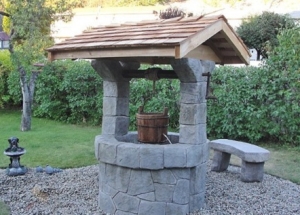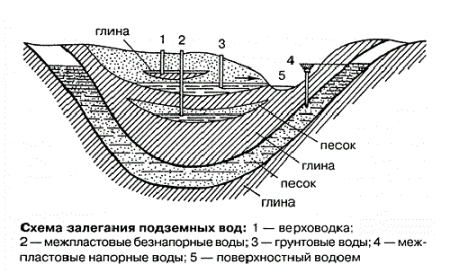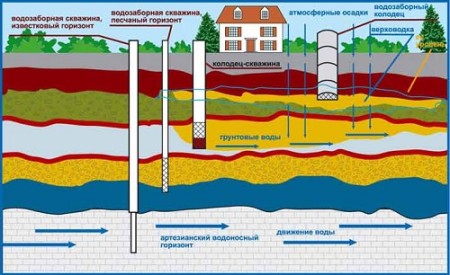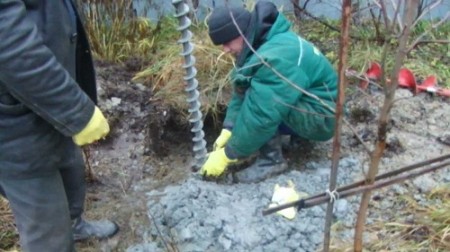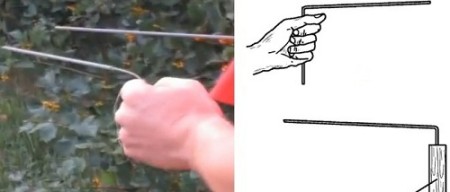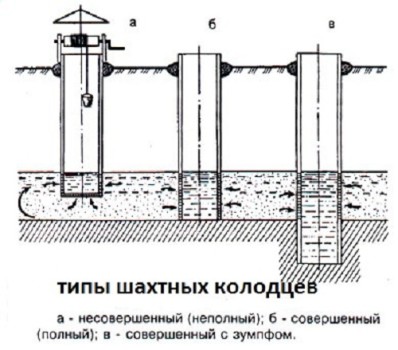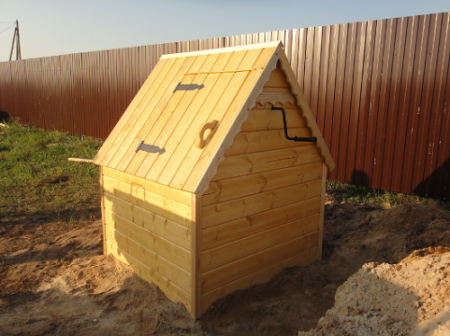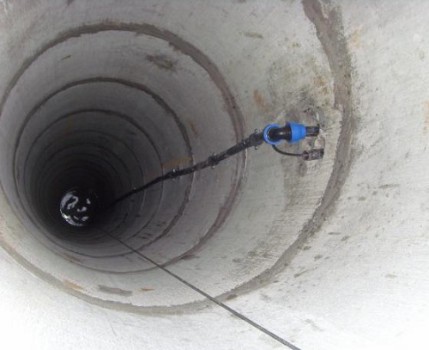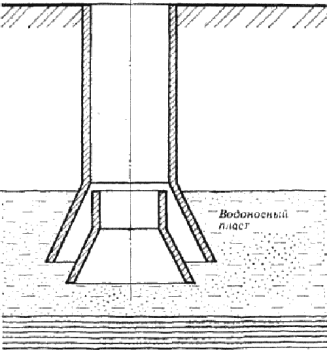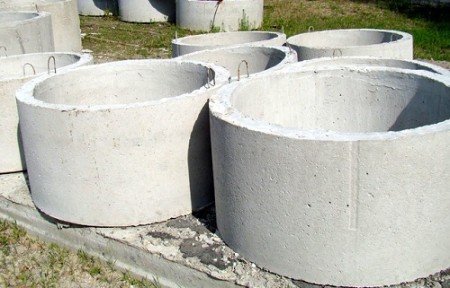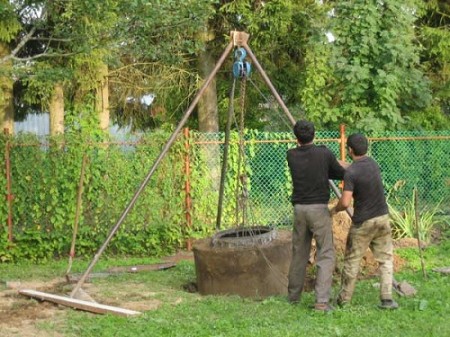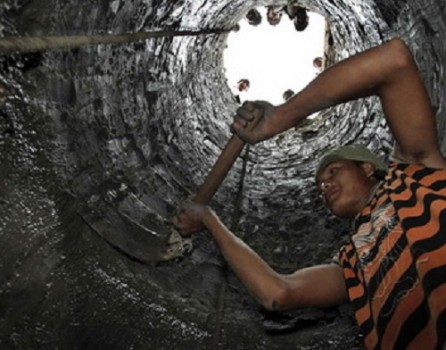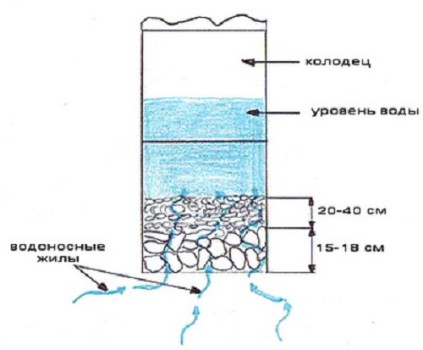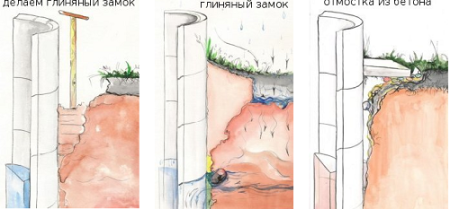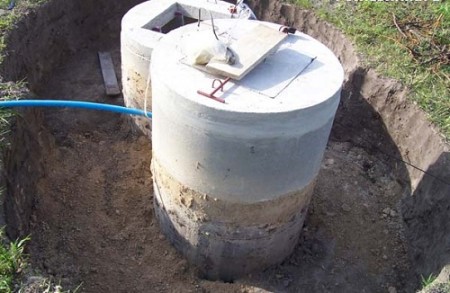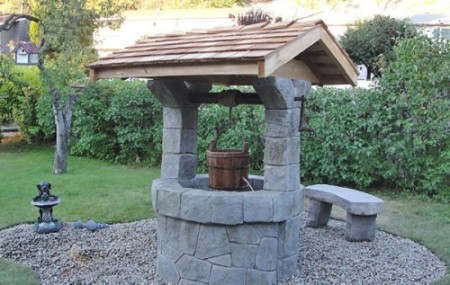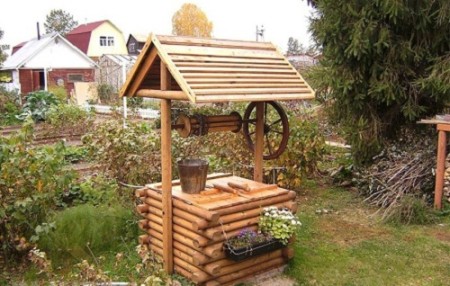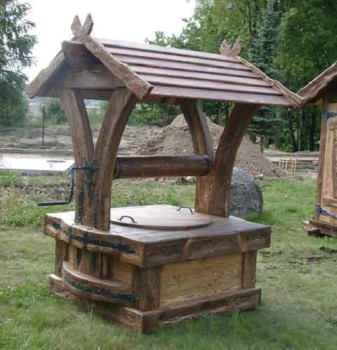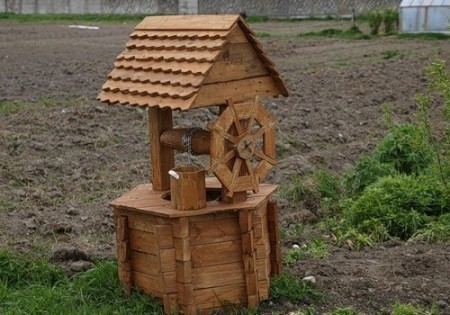One of the main questions on the arrangement of your household plot is to provide a reliable source of drinking water. Well, if the village has a centralized water supply. And if not? Then there are not so many options: to use imported water, dig a well or drill a well. But to carry water to your site, especially in the summer - an impermissible waste of time and effort. It is much easier and more pleasant to use water from your source, although its arrangement takes a lot of time, effort and money. In this publication we will talk about how to dig a well on the site with our own hands, is it so difficult, as it seems at first glance, what knowledge, materials and tools for this will be required.
Content
What are underground waters?
The so-called verkhovodka, or "subcutaneous" water - lies near the surface. Most often it is suitable only for technical purposes and watering, because of the small depth of the bedding it is very poorly cleaned. And if, during the construction of the well, stumble on "subcutaneous" water, as far as possible, try to isolate the mine from its penetration. The easiest way to do this is to use a clay padlock with concrete pavement, we'll explain how to do this, below. The volume of groundwater of this type, as a rule, is small, and directly depends on the amount of precipitation. In the period of drought and in the autumn-winter period, viper often completely disappears, so wells are often digged in late autumn or winter. Groundwater is the closest and most accessible water horizon, the level of which depends little on external factors, and therefore remains practically unchanged. Due to the fact that there is almost no excess pressure at the groundwater level, the height of the water column remains practically unchanged.
Very often, groundwater flows to the surface in the form of springs, the water in which is always clean, fresh and tasty. The same water can be given and your dacha well, provided that all work will be done correctly. As for artesian waters, because they lie at very deep depths, the water is under high pressure from two water-resistant layers. You can get to the water only by drilling a well. When the drill reaches the artesian layer, the water under pressure tends up the well and beats with a fountain.
Where to dig a well
This is the first question that must be solved before starting work. There is an opinion that water is everywhere, and you can dig anywhere. This is only partly true. Water, maybe, is in the place you have chosen, but it can also lie at the level of the artesian horizon. To within one hundred percent, the presence of a good aquifer can only be determined by drilling a well.
However, the pleasure is not cheap, so consider more affordable options. The first thing to do is to look around carefully: are there any wells nearby, and how are they located relative to your site? So you can roughly determine the direction of the aquifer. If the wells are in the neighbors - take an interest in their depth, volume and quality of water. You can also seek help from specialist hydrologists who may have information about the occurrence of groundwater in your area. If desired, you can try the old folk way to find water using metal frames. The presence of water is judged by how much the frame is deflected in a certain place, the stronger, the more likely the source is.
However, specialists are very skeptical about this method, since no one has ever conducted statistics on the results of using this method. Therefore, one should not rely on this method unconditionally. There are several more indirect signs of the presence of a water layer - lush vegetation in a certain place, a swarm of mosquitoes and midges at dawn - insects like wet places. In addition, if you have a dog, pay attention - animals in a strong heat like to dig a hole and lay in it. With a high probability of this place is an aquifer or shallow groundwater.
Choosing a place for a well in the suburban area, do not forget about the sanitary standards. So, the well can not be dug near cesspools, cattle yards, bathhouses, and other potential sources of pollution. The well must be located from similar objects at a distance of not less than 25 meters. You can not make a well on the riverbank, on the slopes of gullies and ravines. If you still decided to dig a well, take care of tools and appliances, because the water can be quite deep and the land will have to be raised to a greater height. And if you do not want to tear your back - take care of the lifting gear: it can be a hoist, a winch or electric hoist.
Construction of a shaft: basic elements
The head is part of the mine, which rises above the ground. It serves as an ornament of the site, and also protects water from dust and dirt, and in winter from frost.
The head is made of brick, wood, stone, or concrete rings. On the headline, a gate and a chain are installed, by means of which water is raised.
The trunk of the well is a mine located under the head. The longest element in the design of the well, is designed to protect against the collapse of the ground inside the mine. In addition, prevents mixing of subcutaneous water with soil. The trunk of the mine is made of reinforced concrete rings, plates, logs, stone, less often - bricks. A variant of a monolithic pouring of a mine with the formwork is possible.
Most often, self-construction of a well uses concrete rings as the simplest and cheapest option. Ring sizes from 70 cm to 1 meter and more are used. To buy concrete rings is not a problem - today they are produced by a lot of companies and individuals. If there is time and desire, you can make concrete rings for the well yourself. The water intake part of the well is the lower part of the shaft in which water is collected. There are three types of water intake part: Incomplete - the mine support, which does not touch the aquifer directly, but provides access to water through the walls and bottom opening. Full - the support is installed directly on the aquifer, and water thus enters the shaft through the walls.
Full with a sump. In this case, a reservoir is built in the aquifer, which allows you to make a reserve of water. For the same purpose, sometimes extend the water intake part of the mine, making it look like a bell.
Concrete rings for the construction of a well
Thanks to the use of ready-made concrete rings factory-made, construction work is much faster, easier and safer. If it is supposed to lower the rings while digging the shaft, a shoe with a chisel is placed on the lower section. As soon as the pit reaches about a meter depth, the first ring is installed.
After that, the workers continue to deepen the mine, the second ring is installed on the first ring. The rings sit under their weight, strengthening the walls of the mine. Similarly, all the following rings are installed. In order for concrete structures to be reliably connected to each other, it is necessary to use rings with locks. If the rings are made without locks, they need to be fastened together by steel staples. So that in the process of shrinkage of the rings between them there is no rupture, each ring is connected to the next several steel plates. Their width should be not less than 60 mm, thickness - 10 mm, length - not less than 500 mm. The joints of the rings are covered with a strong cement mortar. Dig a well at the cottage at least three people. One chooses the soil at the bottom of the mine, the second pulls the container with the ground, the third worker is "on pick-up", and to replace, so that the work goes at a pace without interruptions. For hoisting operations above the shaft, a tripod with a hoist or a winch is built.
You can also use a large collar with a strong rope or chain. At great depths, there is a shortage of air. For ventilation of the shaft, you can use an umbrella or several branches with large leaves that are lowered and raised from the shaft, thus pumping fresh air. Concrete circles are installed up to the aquifer. Approach to groundwater can be judged by decreasing temperature, wet walls or small fontanels on the bottom or walls of the mine. When the aquifer reaches the work, they do not stop the work, but continue to scoop out the mud with water, venturing further. This is really hard work - wet soil should be scooped out until the inflow of water becomes strong enough.
To facilitate work in the aquifer, it is advisable to use a powerful mud pump. This method of digging a well, with the gradual installation of concrete rings, is the safest, although it takes a lot of time. A faster, but also a dangerous option - digging the shaft to an aquifer with the subsequent installation of rings. That is, workers dig the shaft to the water, and only then install all the rings. This method is very dangerous, since the probability of collapse of the soil is quite high.
Bottom filter
To partially clean the water entering the well, a filter is sometimes made on the bottom of the shaft. To do this, water is completely pumped from the well, deepened approximately by the bayonet spade, and thoroughly clean out all dirt. After this, a layer of pure river sand is poured onto the bottom - about 20 cm, and a layer of rubble of the same thickness is placed on top. But if there is an intensive inflow of water in the well, and the bottom is too viscous, then a wooden floor with holes is pre-constructed. From above on a board a layer of rubble is poured. After the filter is ready, water is pumped out several times from the well. For several days water from the well can be used only for technical purposes and for irrigation. It would be superfluous to pour 100 grams of chlorine into the well before pumping out water for disinfection purposes. After the water in the well has cleared, it is advisable to take the sample to the laboratory for suitability for use. Although, if in the nearest district people fearlessly consume water from their wells, it is most likely not necessary to apply to the laboratory.
Clay lock device
To protect against surface water around the well make an earthen castle. The order of work is as follows: the space between the concrete rings and the earth is covered with gravel, leaving the last two meters to the surface. Further expand the pit by about a meter. This space is covered with clay, periodically densely ramming it. A small layer of crushed stone is poured on the surface and a concrete pavement is made to protect the mine from rainwater. The clay castle thus constructed will ensure reliable protection of the mine from rain and surface water.
Safety rules for the well of the well
- A worker working in a mine must wear a helmet.
- All ropes and ropes must be carefully checked for strength before starting work.
- When the depth of the mine exceeds 6 meters, use a safety rope.
- If, during work in the mine, the slightest symptoms of malaise or suffocation occur, you must immediately leave the mine - yourself, or with the help of others.
- At a distance of 2-3 meters from the shaft of the well there should be no foreign objects.
- Before the descent of any object into the mine, it is necessary to warn the person working below.
Arrangement of the above-ground part of the well
The head of the well is most easily made from the same concrete ring. But in itself, the ring does not look very aesthetically pleasing, so it is lined with logs or a beam, imitating a wooden frame. When decorating the well head, decorative brick and stone are also used.
It is necessary to make a roof above the well to protect it from precipitation, fallen leaves, branches and other debris. The roof can be made from any modern roofing material - from slate to metal roofing. When constructing the roof, pay special attention to the braces - with their help you can correct the roof in time if it moves during operation. To do this, unscrew the screws that hold the braces, and expose the design anew on the level.
To protect against foreign objects entering the well, it must be equipped with a lid with a lock. This measure is also necessary to ensure the safety of children and pets. This arrangement of the well in the suburban area can be considered completed. https://www.youtube.com/watch?v=agWn46_HSt4 At this time it's fashionable to decorate the outer part of the well in the traditional Russian style. So, the gate for lifting water is made from a solid log. Its length should be about 1.2-1.4 meters, and the diameter of 200-300 mm. Excellent for producing gates with a cross-section of 200x200 mm - you only need to give it a rounded shape with a planer, drill holes at the ends of a depth of 15-20 cm, into which the gate and axle are inserted. Metal parts of the lifting mechanism of the well must be ordered in the workshops, since they are not available for sale.
Decorative well in landscape design
Even if a well is not needed on the site, it is possible to build a decorative structure that will serve as a decoration for the landscape.
In this case, only the aboveground part is built - with a collar, a roof, a chain, a lid - all like a real well. Quite often, such facilities are masked by communications, in particular, sewer hatches. Flowers and ornamental bushes look very beautiful in the log cabins. Within the framework of this publication, we gave general advice on the construction of a well in a suburban or private plot. This work is difficult and difficult, there are a lot of nuances that can not be listed in the framework of one article. Therefore, if you do not have any experience in this area, it is strongly recommended that you turn to professionals. Quite a lot of teams dig wells not manually, but with the help of drilling rigs, venturing for a day at 10-15 meters. Thus, it is possible to drill a mine to an aquifer and install the rings within one to two days, quickly and safely.


